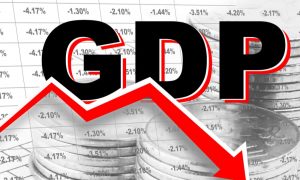 By Nageshwar Patnaik in Bhubaneswar, October 31, 2024: From being one of the poorest states about two decades ago, Odisha has emerged as one of India’s fastest growing economies, with its growth outpacing the national average. The state’s economic growth has been remarkable since the pandemic, with growth rates higher than the national average and the pre-pandemic trend.
By Nageshwar Patnaik in Bhubaneswar, October 31, 2024: From being one of the poorest states about two decades ago, Odisha has emerged as one of India’s fastest growing economies, with its growth outpacing the national average. The state’s economic growth has been remarkable since the pandemic, with growth rates higher than the national average and the pre-pandemic trend.
This was possible largely due to sound fiscal management and resource utilization. It has progressed to become a lower middle income state. Incidentally, India is currently what the World Bank describes as a lower middle income country.
Now the moot question is when Odisha can leapfrog into the club of richer states such as Gujarat, Tamil Nadu and Karnataka? Orissa (now Odisha) will celebrate hundredth year of its formation as the first linguistic state in 1936 during the British rule. Will it become a developed state by 2036 is a million rupee question?
Before 1947, the colonial nature of the land revenue administration entailed high revenues coupled with inappropriate land management practices that led to poor agricultural growth, low food production, and deterioration of the rural economy in Odisha.
In 1950-51, Orissa’s real per capita income was about 90 percent of the national average, but in 2002-03 it came down to about 61 percent of the national average. This long-term falling trend in real per capita income since 2004-05 has not only been arrested, but reversed as well. The State per capita income has started rising and the gap with the average national per capita income is reducing steadily.
 In FY24, Odisha’s Gross State Domestic Product (GSDP) reached a remarkable figure of Rs 8.3 lakh crore. The state’s GSDP growth outpaced the national average by approximately 1%. This robust growth has significantly reduced the per capita income disparity between Odisha and the rest of India to 13%, a substantial improvement from the 32% gap observed in the fiscal year 2015-16.
In FY24, Odisha’s Gross State Domestic Product (GSDP) reached a remarkable figure of Rs 8.3 lakh crore. The state’s GSDP growth outpaced the national average by approximately 1%. This robust growth has significantly reduced the per capita income disparity between Odisha and the rest of India to 13%, a substantial improvement from the 32% gap observed in the fiscal year 2015-16.
In terms of actual figures, Odisha’s per capita income was recorded at Rs 1.61 lakhs, closely approaching the national average of Rs 1.86 lakhs. Odisha, ranking as the 13th largest state by economic size in FY23, has seen its contribution to India’s GDP climb to nearly 2.8% in FY24. This economic ascent is largely attributed to the state’s impressive real GDP growth rate of 8.5% in FY24, which eclipsed the national growth rate of 7.6%.
The growth momentum across sectors including agriculture, manufacturing, and services is for anyone to see. Besides, mining has contributed to Odisha’s economic well-being as well as to its robust public finances accounting for nearly 10 percent of its economy, and growing at 8 percent annually. The state has a unique fiscal advantage Thanks to the mining royalties. It collected non-tax revenue to the tune of 3.5 percent of its GDP a year compared to 1 percent for an average Indian state during the last decade.
The economy of Odisha has grown at a rate of 11.5 per cent in 2021-22 and 7.8 per cent in 2022-23. These growth rates have not only been significantly higher than that at the national level for the corresponding years, but also surpassed the pre-pandemic trend of performance. The state is currently undergoing significant shifts across multiple sectors. These include education, healthcare, agriculture among others. These transformations are not mere incremental changes but represent paradigm shifts in how these sectors operate and contribute to society.
The industrial sector, particularly manufacturing and mining sector, has been the cornerstone of Odisha’s economic development, accounting for around 43% of the GSDP as against 28% for whole country. Odisha’s status as a resource-rich coastal state is further coagulated by its leading position in mineral production across India.
 The state accounts for the entire chromite output of India, nearly three-quarters of bauxite yield, over half of the iron ore extraction, about a quarter of coal mining, and a fifth of manganese production as of the fiscal year 2022. Concurrently, the services sector is also gaining momentum, contributing 36% to the GSDP of Odisha.
The state accounts for the entire chromite output of India, nearly three-quarters of bauxite yield, over half of the iron ore extraction, about a quarter of coal mining, and a fifth of manganese production as of the fiscal year 2022. Concurrently, the services sector is also gaining momentum, contributing 36% to the GSDP of Odisha.
The state’s rising prosperity has been accompanied by notable improvements in a variety of socio-economic markers such as gross enrollment ratio, gender parity index, infant mortality rate, fertility rate, life expectancy, immunization, and access to sanitation, drinking water and electricity.
The state has been running a revenue surplus, unlike the revenue deficit for an average state; holds very few contingent liabilities; and runs fiscal deficit within the limits mandated under its fiscal rule. The state’s capital expenditure has doubled to nearly 5 percent of its GDP during the last decade, and far exceeds that of an average state. Further, under most conceivable scenarios, its already small public debt is projected to decline further.
Nevertheless, the eastern state lags on a number of indicators, like urbanization (its urbanization rate of 18 percent is only half that of the national average); enrollment ratio in higher education (which is only 22 percent compared to national average of 28 percent and much below that of the leading states such as Tamil Nadu’s 47 percent); and bank credit to GDP ratio (which at 29 percent is nearly half that of the national average).
These clearly indicate that despite lifting itself from the rank of a low-income economy to that of a low middle-income one, the state has miles to cover for it to become an advanced economy or to contribute to nation’s goal of becoming an advanced economy during the coming years.
For that the state must aim to attain double-digit growth rate and prepare its policy framework accordingly. Second, a high middle-income economy with a per capita income of Rs 3,78,350.29, or a high-income economy with a per capita income of Rs 10,50,948, looks very different from today’s Odisha with a per capita income of about Rs 1,68,151. In fact, higher income economies depend less on agriculture and more on manufacturing and modern services; less rural and more urban; more digitally connected; more innovative; and more capital and skill-intensive.
 For Odisha to transform itself to an upper middle-income or a high-income economy, it ought to make a paradigm shift in steer its growth strategy keeping these end goals in sight. That means, the present Mohan Majhi led BJP government has to allocate public expenditure suitably on urbanization, skill formation, and R&D; simultaneous development of institutions and state capacity; and far greater domestic and international integration to attract capital, technology, and access to markets.
For Odisha to transform itself to an upper middle-income or a high-income economy, it ought to make a paradigm shift in steer its growth strategy keeping these end goals in sight. That means, the present Mohan Majhi led BJP government has to allocate public expenditure suitably on urbanization, skill formation, and R&D; simultaneous development of institutions and state capacity; and far greater domestic and international integration to attract capital, technology, and access to markets.
Most importantly, the power-that-be needs to take cue from success stories in specific sectors from various other states and countries and according plan a holistic development strategy. For instance, it can take cue from Kerala and Goa in international tourism (Odisha gets only 0.7 percent of the domestic and 0.4 percent of international tourism); Karnataka and Telangana in offering an alternative IT hub; and Tamil Nadu and Gujarat in manufacturing.
The challenge is monumental as the existing drivers of growth are running out of steam. Its GDP growth has decelerated to 6.6 percent during the last decade from 8.1 percent in the preceding decade. Worryingly, deceleration has been equally noticeable in manufacturing, mining, and services.
The BJP government can work out a fitting strategy to turn Odisha into a prosperous state for that it needs to shift gears. This may pave the way for the state to join the elite club of states at least in a decade’s time.


Leave a Reply
Be the First to Comment!